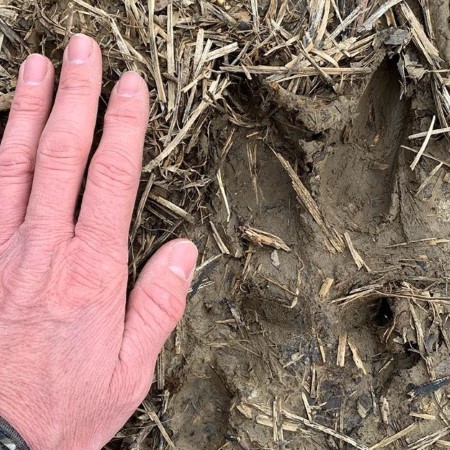As a hunter, it’s always nice to see deer tracks.
At least you know you have deer in the area. But deer hooves do much more than just leave a “deer was here” signature in the dirt.
Hooves make just about everything a deer does possible and easier.
Deer hooves are made up of keratin, which is the same thing human finger nails are made of.
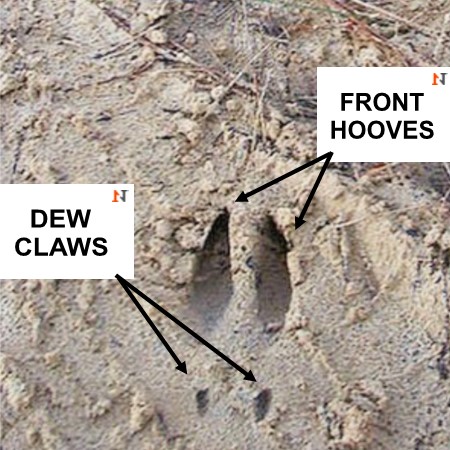
Deer front hoof and dew claws
The hooves consist of two divided, or cloven, elongated toes.
Each deer hoof has two “dew claws” (see picture), located above and behind it.
Mammals such as gazelles, sheep, hogs, cattle and goats also have cloven hooves.
A deer’s dew claws typically will not show as part of its track, unless the deer is travelling through mud or snow.
In these conditions, the dew claws give the deer’s foot a larger and wider platform with which to move about.
Hooves are one of the most important parts of deer’s body and are useful for many purposes. So, let’s take a look at 5 ways in which deer use their hooves…
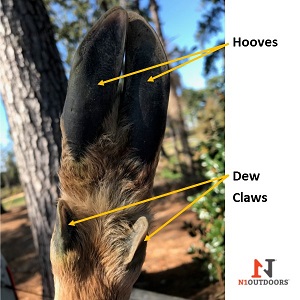
A deer’s hooves are cloven, or split, and are made up of keratin, much like human fingernails.
Deer will use their hooves for:
Running And Jumping
Deer obviously run and jump using their legs. But, while powerful hind leg muscles account for much of a deer’s ability to run and jump, hooves play a vital role as well.
A deer’s front cloven hoof helps it to turn sharply and push off when jumping.
So, whether deer are running up to 40 miles per hour to evade predators, chasing during the rut, or jumping in excess of eight feet in the air, they couldn’t do it without their hooves.
The keratin in deer hooves is sheeted and runs in all directions.
This results in hooves that are stronger, harder and more crack resistant than bone, making them durable enough to support the animal’s weight, even when it is running or jumping with force.
When deer run, the toenails on the front of the hooves allow it to reduce the area of the foot that touches the ground, resulting in a longer stride that allows it to cover more ground.
-
Sale!
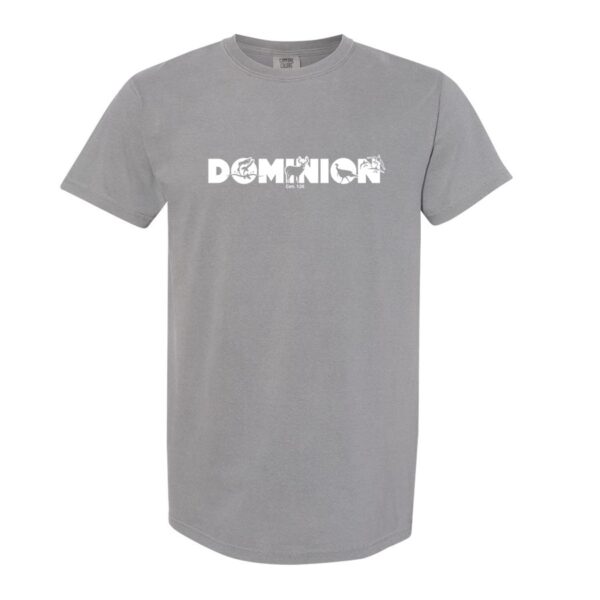
N1 Outdoors® Dominion™ Tee
$19.99 Select options This product has multiple variants. The options may be chosen on the product page -
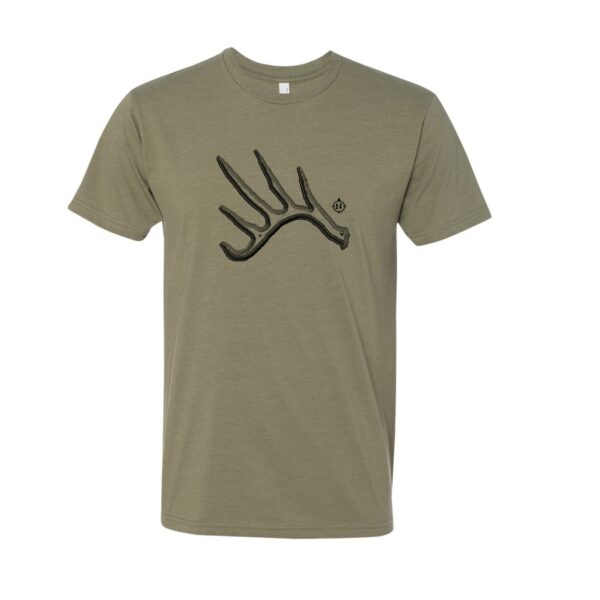
N1 Outdoors® Tine Lines™ Whitetail Deer Antler Tee
$26.99 – $29.99 Select options This product has multiple variants. The options may be chosen on the product page -
Sale!
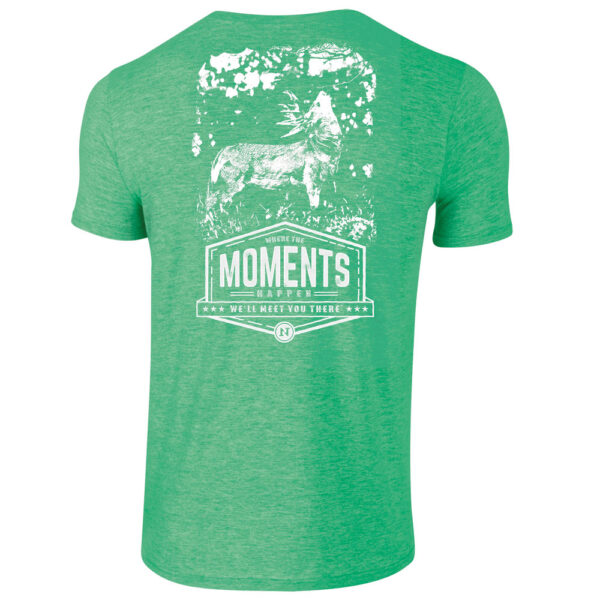
N1 Outdoors® N1 Moments™ Licking Branch Buck SS Tee
$5.00 Select options This product has multiple variants. The options may be chosen on the product page
Hoof Stamping (Stomping)
If you’re a hunter, you have probably experienced the ‘ole “foot stomp.” It usually goes something like this… You’re watching from a tree stand or a permanent blind when a deer sees your shape or movement, or gets wind of your scent. It senses the danger and stops abruptly, curls up a front leg and starts stamping its hoof.
Deer do this to either confirm the apparent danger or become comfortable that there is actually no threat. Sometimes the deer will flee, but hopefully for the hunter, the animal will eventually settle down and continue browsing or travelling in a manner that allows an ethical shot.
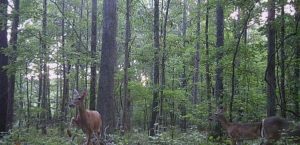
Deer will stomp their hooves to try and cause movement from perceived danger.
Defense
It’s not uncommon, especially in suburban areas, for people to mistake deer for defenseless animals. But don’t let their majestic appearance and graceful movements fool you.
In addition to hunters, deer have other natural predators. These can include wolves, coyotes bobcats, and sometimes even bears and alligators.
When a predator threatens or attacks, a deer can either run or fight. Bucks often use their antlers to defend themselves, but just like does, can rise up on their hind legs, using their hooves to strike predators. They can also kick from behind, using the hind legs and hooves, if necessary.
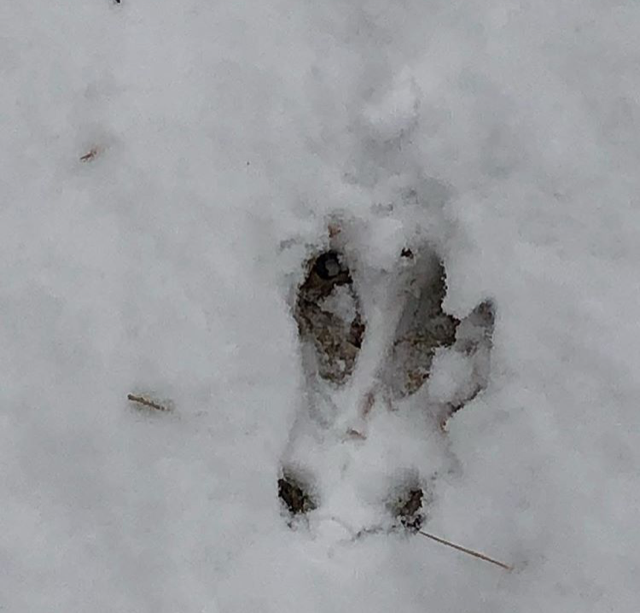
Deer hooves do more than just leave tracks. They can be used by a deer to help defend itself against predators and perceived danger.
Deer Scraping
For hunters, the rut is a magical time of year. It’s that time when many hunters dream about that deer of a lifetime walking into view. Bucks are rubbing trees, using licking branches, and making “scrapes.”
In addition to hooves giving a buck the ability to chase does back and forth at high speeds, they also play a key part in the deer scraping activities.
Bucks and does alike will visit and use scrapes, but during the rut, bucks scrape more aggressively and will use the scrapes to announce their presence in the area as well as to tell other bucks to stay out of it.
Bucks will make “scrape lines” along travel routes and as they move through their territory. These can show up along field edges, fence lines and between feeding and bedding areas.
Bucks will paw and clear (scrape) an area to be free of leaves and debris. They will urinate in the scrape to leave their scent, effectively marking their territory. In addition, they will lick and chew overhanging branches, leaving forehead scent as well.
Does will also visit and use these scrapes, allowing bucks, upon a revisiting of the scrape, to know if a doe is ready to be bred.
As you can see in this video (sound up), whitetail bucks will make “scrapes” on the ground with their hooves and urinate in them. They will typically make these scrapes under a “licking branch,” where they will chew and rub their forehead, leaving scent.
Get the Licking Branch Buck Tee
Interdigital Scent
Deer have interdigital scent glands in between the two hooves on each leg and one of the most important glands the animals have. Deer use the scent dispersed from these glands to track one another.
The interdigital glands are small, sparsely-haired sac located between the hooves on each foot. The sacs contain a yellowish material called sebum. The scent is left in a deer’s track every time it takes a step.
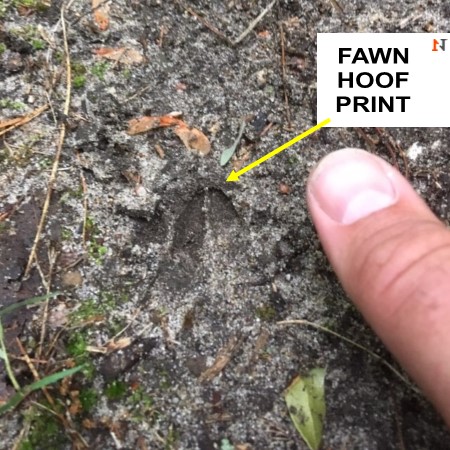
Fawn tracks are much smaller than full-grown deer tracks. The size of a fawn hoof print compared to human thumb
Whitetail Deer Hooves Vs. Mule Deer Hooves
Whitetail deer and mule deer have many discernable differences in appearance and movement. Both have a unique antler structure.
Mule deer utilize a bouncing gait, known as a pronk or stot. The whitetail do not utilize this type of gait, but rather tend to run and leap when fleeing danger.
While whitetails and muleys may have their differences, hoof structure and tracks are nearly impossible to differentiate. Both whitetail and mule deer have two hooves that form and upside-down heart-shape on the ground with the rounded bottom.
The side of the hooves are convex, while the tips of its hooves are located towards the inside of the track. The outside of the toe is usually slightly larger than the inside toe while the hind feet are smaller than the front feet.
Without other non-hoof signs, distinguishing between whitetail deer and mule deer is nearly impossible.
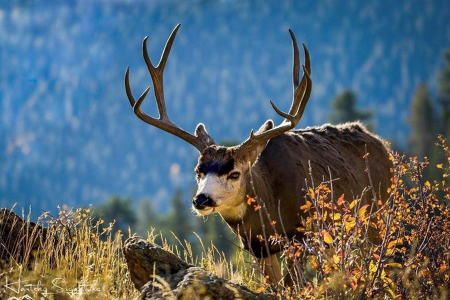
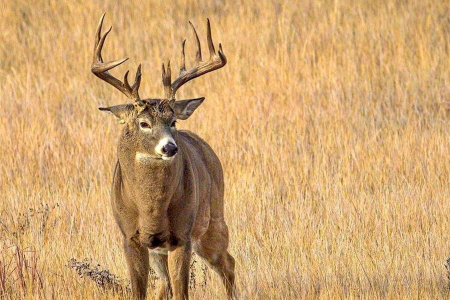
Hunt The Deer Tracks?
Hopefully, we’ve been able to provide you with a useful overview of how deer use their hooves. Here’s one final thought… those deer tracks you find will only tell you where the deer have been. Here’s to hoping you find out where they end! Happy hunting!
-
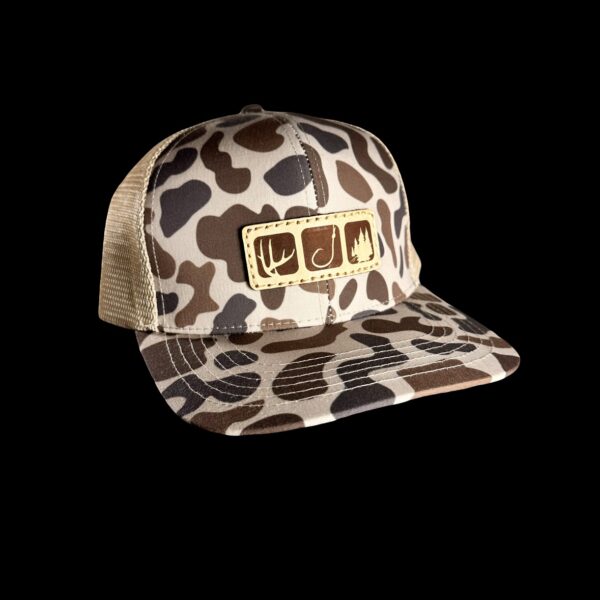
N1 Outdoors® Flagship TriBlock Slough Camo Leather Patch Trucker Hat
$29.99 Select options This product has multiple variants. The options may be chosen on the product page -

N1 Outdoors® Flagship TriBlock Leather Patch Hat (Kelly Green)
$29.99 Select options This product has multiple variants. The options may be chosen on the product page -
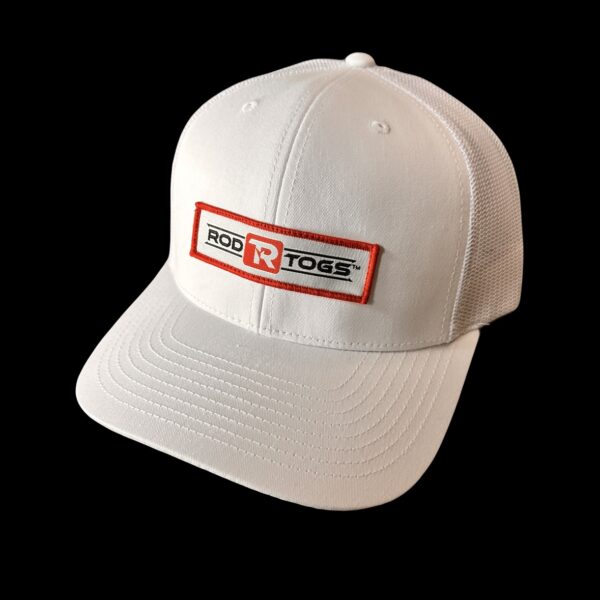
N1 Outdoors® RodTogs™ Patch Trucker Hat (White)
$26.99 Select options This product has multiple variants. The options may be chosen on the product page

